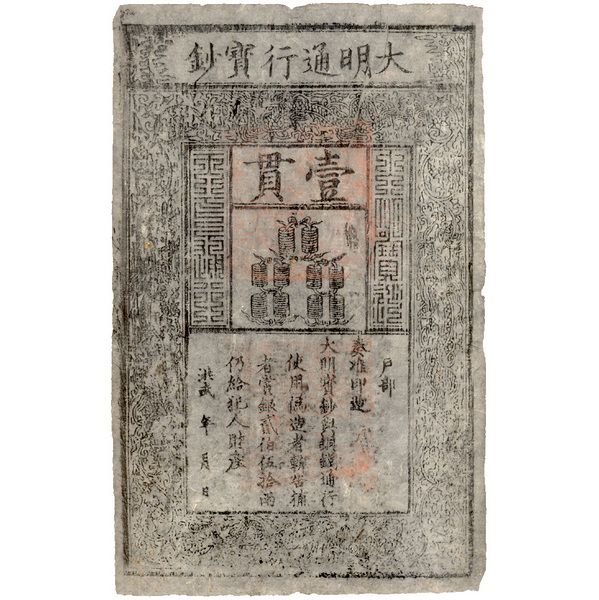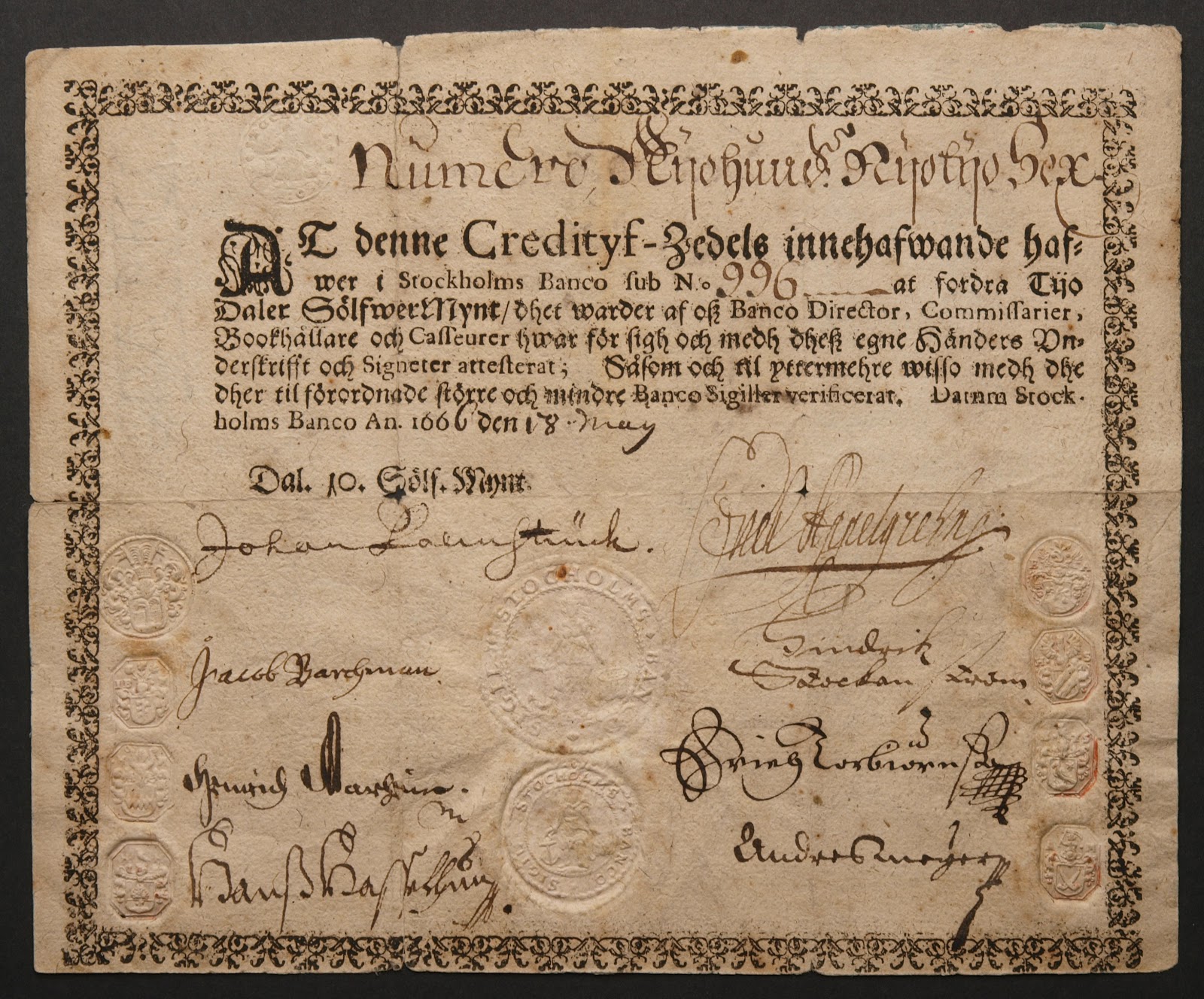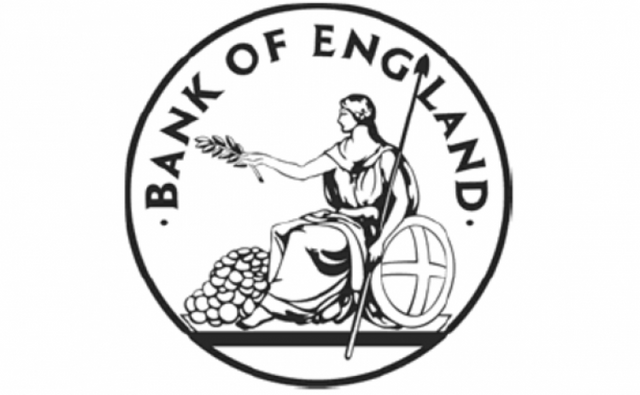The History of Money part 2. Paper Money and the first Banks
In a previous post, we examined ancient money, so it is time to continue the journey with the creation of paper money and the emergence of banks. If you want to know the characteristics and properties of money you can read this post.

Paper Money
As we've seen people invented coins as a medium of exchange. It was a convenient way to trade goods and services. But it wasn't convenient enough, especially for larger transactions. A solution had to be found and that was paper money. Paper money was introduced in Song Dynasty China during the 11th century. Its roots were in merchant receipts of deposit during the Tang Dynasty (618-907), as merchants and wholesalers desired to avoid the heavy load of copper coins in large commercial transactions. Merchants would deposit their coinage at government-authorized deposit shops and use their receipts to trade more conveniently. By 1120, the Chinese government had recognized the potential of printing paper money and started issuing the first generally circulating banknotes, granting itself a monopoly in the area. Currency remained regional until 1265 when the Song government produced a national currency and of course continued to have the monopoly of printing it.

The first paper money created in China. source
In the 13th century, paper money became known in Europe through the travels of Marco Polo. He wrote a book explaining that these pieces of paper passed universally over all the kingdoms and provinces and territories of the Emperor. And nobody, however important he may think himself, dared to refuse them on pain of death. ( that's a quite strong legal tender ). You could transact all sales and purchases of goods by means of them as if they were coins of pure gold. Furthermore, all merchants arriving from India or other countries, and bringing with them gold or silver or gems and pearls, were prohibited from selling to anyone but the Emperor ( a heavily centralized exchange ). He had twelve experts chosen for this business, they evaluated the goods and the Emperor paid a liberal price for them in those pieces of paper. The merchants accepted his price readily, for in the first place they would not get so good a one from anybody else, and secondly they are paid without any delay. And with this paper-money they were able to buy whatever they liked anywhere over the Empire, while it was vastly lighter to carry about on their journeys.
The emergence of Banks
Despite being introduced to the concept of paper money, Europeans continued to widely use coins all the way up to 1600, mostly because they had enough supply of precious metals from colonies that enabled them to mint more and more cash. Eventually, banks started to emerge, where you could deposit your coins and then the banks would issue bank notes for depositors and borrowers to carry around instead of coins. These notes could be taken to the bank at any time and exchanged for their face values in silver or gold coins. This paper money could be used to buy goods and operated much like currency today, but it was issued by banks as private institutions, not the government, which is now responsible for issuing currency in all countries.
The first European banknotes were created in 1661 by the Stockholm's Banco in Sweden, which was founded in 1657 by Johan W. Palmstruch.

This banknote is dated 1666 [5]. Palmstruch engaged in dishonest accounting practices and created more bank notes than he could account for. The bank collapsed in 1668, the founder arrested for fraud and died in prison in 1671.
The first true public bank was the Bank of Amsterdam, founded in 1609. It was guaranteed by the City of Amsterdam and its goal was to bring order and efficiency to the wide range of coinage in circulation in Amsterdam, a major commercial center at the time. It accepted local, foreign and debased coins, valued them according to common standards, and then gave credit in an account in a common value, 'bank money,' for which it issued a receipt and charged a small administrative fee. This standardization of values significantly diminished the profitability of debasing money and was an important step in making European currency more efficient.
The Bank of Amsterdam, established some modern Central Banking and banking concepts like a state guarantor, while maintaining an independent entity from the Treasury, kept a form of legal compulsion that meant the bank money was required to be used for transactions above a certain value and took it a step further with the introduction of fractional reserve lending.
While it initially operated solely as a depository institution, on a 100% reserve basis in time, it started lending money to the Dutch East India Company, initially on a short-term basis, out of the deposits of others.This activity is known today as 'fractional reserve banking' and is a key aspect of how money is created and how the money supply is managed in a modern economy. Unfortunately, the Dutch East India Company fell on progressively harder times and eventually defaulted to the Bank of Amsterdam. So, in a manner that would be repeated by thousands of banks over the years, the Bank of Amsterdam become an early victim of overly optimistic lending, was taken over by the City of Amsterdam in 1791 and was closed in 1819, making it the first ever bailout.

The logo of Bank of England. source
The Bank of England was founded in 1694, survives through to the present day, unlike the Bank of Amsterdam, and became the predecessor of all modern Central Banks. It was, for centuries, the most important Central Bank in the world, during a period that the pound sterling was the world reserve currency. The Bank of England started as a private bank, designed to allow William III to borrow 1.2M sterling that the city goldsmiths could not support. In exchange for a share rights offering of 1.2M sterling (that was then lent to the government), the bank gained the right to issue notes. This was an important right and another step toward modern fiat currency. In time, and through a succession of Acts restricting its competitors, the Bank of England came to monopolize bank note issuance in England and Wales, effectively become the Central Bank of the UK.
And this concludes today's post. In the next and last part of the series, we will explore the evolution of money up to this day and take a look at modern forms of money, such as Bitcoin.
And until we have all the paper money that we want,
Be Healthy, Smile and Steem.
References and Additional Material
[1] Introduction to Digital Currencies MOOC 9 from University of Nicosia.
[2] https://en.wikipedia.org/wiki/History_of_money
[3] http://www.pbs.org/wgbh/nova/ancient/history-money.html
[4] https://www.investopedia.com/articles/07/roots_of_money.asp
[5] http://gastruckdriver.blogspot.gr/2012/11/the-first-european-paper-money.html
[6]Marco Polo : The Travels of Marco Polo, a Venetian, in the Thirteenth Century: Being a Description, by that Early Traveller, of Remarkable Places and Things, in the Eastern Parts of the World.

Βλέπω κώλο, κάνω Upvote
Xxxaxaxaaa...mazi sou..
νταξει , το ριξατε τελειως το επιπεδο ... love you guys . :)
Χαχαχαχα, rock "bottom" το επίπεδο! :-D
και συ τεκνον βρουτε ??? :)
Χαχα, I couldn't help it ! :-P
Ποοοοοοοουυυυυφφφφφφ . :)
Very interesting the subject of banknotes, I did not know that it was also old. A lot of things are finally coming from China ... Amsterdam amazes me ... It's really good to learn all these things, thank you very much @iliasdiamantis
Thank you, Marie. I also learned a lot writing this post . :)
Its very interesting post. I like history and i found many new information from your post. Thank you 😊
Glad that you found it useful.
what history!, good job.
thanks
Resteemed to over 14100 followers and 100% upvoted. Thank you for using my service!
Send 0.200 Steem or 0.200 Steem Dollars and the URL in the memo to use the bot.
Read here how the bot from Berlin works.
We are happy to be part of the APPICS bounty program.
APPICS is a new social community based on Steem.
The presale was sold in 26 minutes. The ICO will start soon.
Read here more: https://steemit.com/steemit/@resteem.bot/what-is-appics
@resteem.bot
Resteemed by @resteembot! Good Luck!
Curious? Read @resteembot's introduction post
Check out the great posts I already resteemed.
ResteemBot's Maker is Looking for Work.
Thanks for sharing this information i think very low number of people know about this i do not know about this before your post keep it up
But it is not good enough for you to upvote it ... :(
What a pity :(
now I am totally unmotivated to continue ...
I auto-voted yet this thread motivated me to comment too.. great work brother. Keep sharing knowledge!
thank you @kennistyles :)
You got a 0.98% upvote from @postpromoter courtesy of @iliasdiamantis!
Want to promote your posts too? Check out the Steem Bot Tracker website for more info. If you would like to support the development of @postpromoter and the bot tracker please vote for @yabapmatt for witness!
iliasdiamantis
Now see my package i made some beneficial update for you like
i give 0.020 SBD vote
Resteem to my 2100 plus followers
give you 30 upvotes
In just 0.050
Now you can see my profile whom sand me 0.050 they must get these 3 things which i mention above its very beneficial and low rate package for you.
This post has received gratitude of 1.42% from @appreciator courtesy of @iliasdiamantis!